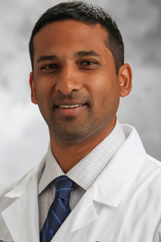By Santosh Rao, MD / I find it difficult to truly define integrative oncology. Statements about how we look after the  “whole person”, pay attention to lifestyle and stress or even spirituality seem ambiguous and incomplete. All caregivers pay attention to these things, perhaps some more than others, but is it the extent to which we devote time to holistic health or the fact we do it that makes us unique? Furthermore, what is included in integrative clinics vs. other settings is changing as we gather more evidence and as complementary therapies become more accepted. Perhaps we are moving towards integrative care, as we conceive of it now, becoming a standard model, focusing on whole-person health, a personalized approach, inclusive of multidisciplinary care utilizing diverse disciplines.
“whole person”, pay attention to lifestyle and stress or even spirituality seem ambiguous and incomplete. All caregivers pay attention to these things, perhaps some more than others, but is it the extent to which we devote time to holistic health or the fact we do it that makes us unique? Furthermore, what is included in integrative clinics vs. other settings is changing as we gather more evidence and as complementary therapies become more accepted. Perhaps we are moving towards integrative care, as we conceive of it now, becoming a standard model, focusing on whole-person health, a personalized approach, inclusive of multidisciplinary care utilizing diverse disciplines.
Still, I feel there is something that people recognize as different in an integrative oncology clinic — the ability to synthesize different concepts and perceptions of health along with different modalities, and to help people navigate the complex and often unregulated world of natural supplements and internet half-knowledge.
When I read consensus guidelines on integrative approaches to symptoms or in certain types of cancers, it strikes me how different these guidelines are compared to how many integrative practitioners practice or what patients are actually doing. We are limited by the quality of evidence available to us when we develop guidelines. As a practicing oncologist, I know that national guidelines and algorithms are part of almost every decision I make in clinical practice. You could go to multiple oncologists — and many patients seek multiple opinions — and there is often significant agreement on the approach to care. However, I think it would be highly unlikely you would get such agreement among integrative practitioners.
Integrative oncology has developed its own sphere of rapidly growing evidence, and integrative practitioners have the task of not only knowing the evidence, but also how it fits into a field where the guidelines are still somewhat murky. This will change as the evidence grows and recommendations become more firm and precise, but one of the most important decisions we all make in our integrative centers is where we draw the line — what should be included and what shouldn’t in the practice?
Running a successful integrative oncology practice is similar to having a successful consultation practice. You have to consider where you are getting your patients from, are they self-referrals or consultations? If you are practicing outside of a cancer center or clinic, independently, perhaps choices can be based more on patient preferences. However, the concept of integrative oncology suggests a coordination of care when conventional care is complemented.
For academic integrative oncology centers or practices linked with cancer centers, you have to consider more than just the evidence. You have to know what your patients are exposed to geographically and culturally, how open referring providers are to different complementary approaches, and what you can feasibly offer (e.g. who you can hire). Communication is key, not only to coordinate care, which is important, but also to elicit buy-in from referring providers and other important decision makers. There is certainly a list of providers and offerings that most would agree should be part of an integrative oncology practice, mostly focusing on lifestyle and stress management, but even the details of those offerings will differ among practices. Through individual discussions with integrative oncology providers and from my many opportunities shadowing, it’s still amazing how differently we all practice.
Example 1: Practice Styles
Areas where there is significant agreement include diet, exercise, and stress management, where there is generally more evidence and guidelines that cross over to national cancer guidelines. Dietary recommendations do differ, and some integrative providers use their personal experience or knowledge from working closely with others from allied disciplines to construct diets that meet individual patient needs. Where there is significant distinction is the use of natural supplements and complementary therapies. At our integrative center, we use turmeric, omega 3 supplements, vitamin D3, acupuncture, yoga, physical exercise, and sometimes SAM-E for arthralgias due to aromatase inhibitors. These interventions are based on studies and practice experience, but they are not universally applied. Furthermore, there is no clear best dose or frequency for any of these interventions. Guidelines are grey for many of the suggestions we give, but we have found success and it gives us more confidence since we think these interventions help.
Example 2: Coordination of Care
Using the same example given above, using an integrative approach to arthralgias for aromatase inhibitors in breast cancer patients, we recently had a group meeting with our breast oncologists. There was significant disagreement regarding our practice style and whether we should even be trusted to make these decisions on our own. To our advantage, I am a breast oncologist, which gives me more freedom and trust than some of my colleagues. A few of our breast oncologists have worked with their own pharmacists and were concerned about the effects of natural supplements, to the point where they did not want any of their patients being on any of these while on aromatase inhibitors.
After much discussion, they backed off from this stance, but there is still tension regarding the coordination of care and being on the same page. What we have agreed on is that we would communicate after seeing each patient, but we would not significantly change our practice. The ethical dilemma for us as an integrative center was how could we change or limit our practice if we truly felt we were helping our patients and they were asking for our help? We have to practice to the best of our ability and meet our patients’ needs.
However, the political side of this example is that if we do not coordinate care and get buy-in from these breast oncologists, we risk losing consults or having our suggestions refuted by the breast oncologist. Communication is key and we continue to meet, but agreements have not been common, specifically because there is disagreement about what level of evidence is required to pull something into practice. Do we count on clinical experience and limited safety data or are we more strict, especially if there is a hint of an effect that may be pro-estrogenic or against the actions of the aromatase inhibitor? These arguments are not simple or black or white, they really have to be discussed.
We may all define success differently, but to grow an integrative oncology practice and develop a good reputation among other providers, you have to consider where to start and then discuss as you go along. Not everyone is supportive of integrative oncology, though those voices are getting softer, but sometimes problems come when you don’t expect them. Even if we feel strongly about a style of practice, we all have to pick our battles carefully, being mindful of our ultimate goals.
Changing the Culture
The key is that all integrative oncology practices will have a different playing field, and it takes some political skill and business savvy to really make the practice a respected part of patient care. That doesn’t always happen; many integrative oncology centers are off to the side, not used by all practitioners. While we can’t force caregivers or patients to consider an integrative approach, the key is to get our foot in the door and develop a solid reputation. Be smart. It is through communication, teaching, research, and good practice that we start changing minds and gaining friends, and that can add momentum to a growing integrative practice.
In many cases, we have to slowly change the culture. In my experience, many patients are yearning for an “awakening” within oncology clinics, not because they don’t understand the merits of conventional care, but because they have often experienced the benefits of complementary therapies, or an integrative approach is aligned with their beliefs. Part of leading an integrative oncology center or an integrative approach to cancer treatment is knowing how to incorporate different approaches strategically. The gains we have made in integrative medicine have been built not only on research, but also on the wise decisions leaders in the field have made about how to unfold integrative care in different settings. That remains the best approach.
Santosh Rao, MD, ABIHM is the Medical Director of the James M Cox Foundation Center for Cancer Prevention and Integrative Oncology at Banner MD Anderson Cancer Center in Gilbert, Arizona. He is also a practicing medical oncologist with a focus on genitourinary cancers. Dr. Rao is continuing his training in Ayurveda and was the co-chair for the upcoming Society of Integrative Oncology Annual Conference in Scottsdale, Arizona in October 2018. He participates in integrative medicine research, including sleep, meditation and cancer, the impact of integrative medicine on health care costs and outcomes, and art therapy and the effects on chemobrain.




